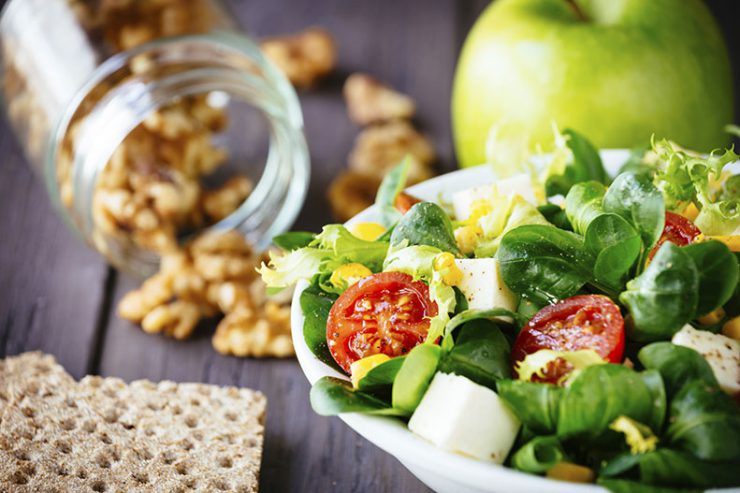Food and heart health go hand in hand, and a healthy diet can lower your risk for heart and vascular disease. If you think healthy eating means a bland diet without the foods you love, think again. You can enjoy many healthy options and still make good choices for your heart.
Learn about four common myths and get the facts about tasty, easy, heart-healthy eating below.
Never Miss a Beat!
Subscribe to Our HealthBeat Newsletter!
Thank you for subscribing!
You can now select the specific newsletters you'd like to receive.
You are already subscribed.
Subscribe to more newsletters in our email preference center.
Sorry, an error occurred. Please try again later.
Get Healthy Tips Sent to Your Phone!
Myth: Heart-Healthy Food Has No Flavor
Fact: Heart-healthy foods are lower in fat, cholesterol, and sodium and higher in fiber, but this doesn’t mean they’re bland. Fresh fruits and vegetables pack in all kinds of sweet and savory flavors, and you can find creative ways to spice up your favorite dishes without adding salt or sugar. Try herbs and spices like basil, cinnamon, ginger, onion powder, paprika, and sage, or spritz on lemon juice, lime juice, or vinegar the next time you cook.
Myth: To Be Heart-Healthy, I Have to Stop Eating All of My Favorite Foods
Fact: You don’t have to say goodbye to everything you love, but you might need to swap out some foods for others, or change how you make your dishes. Talk to your doctor or a nutritionist about healthier choices and ways to prepare your favorites without added fat, sugar, and salt. Some easy swaps include roasting or grilling meat instead of frying, choosing whole grain bread instead of white, going for low-fat milk, cheese, or yogurt, and switching from canned vegetables to fresh or frozen.
Myth: Healthy Eating Means Lots of Cooking
Fact: Many heart-healthy foods are easy to make, and some require no cooking at all. Fresh fruits and vegetables can be eaten raw or easily peeled and chopped to mix into your favorite dishes. A piece of fruit or a handful of almonds makes a simple, healthy, on-the-go snack. Grilling is a quick option that isn’t just healthier than frying but will also save on kitchen cleanup time.
Myth: Healthy Food Costs a Lot of Money
Fact: You can make healthy choices without breaking the bank by planning out your meals and snacks and getting creative with what you buy. Fresh fruits and vegetables cost less in-season, and frozen varieties are available year-round. Unsalted beans and nuts offer a great option for protein, and you can choose lean pork, poultry, or fish instead of red meat. Look for sales, and don’t be shy about using coupons at your local store.
If you’re not sure where to start, talk to your doctor or a nutritionist about heart-healthy choices that are right for you. Looking for inspiration? Check out our article on How to Beat the Heat with Heart Healthy Food.
About Heart and Vascular Institute
The UPMC Heart and Vascular Institute has long been a leader in cardiovascular care, with a rich history in clinical research and innovation. As one of the first heart transplant centers in the country and as the developer of one of the first heart-assist devices, UPMC has contributed to advancing the field of cardiovascular medicine. We strive to provide the most advanced, cutting-edge care for our patients, treating both common and complex conditions. We also offer services that seek to improve the health of our communities, including heart screenings, free clinics, and heart health education. Find an expert near you.
